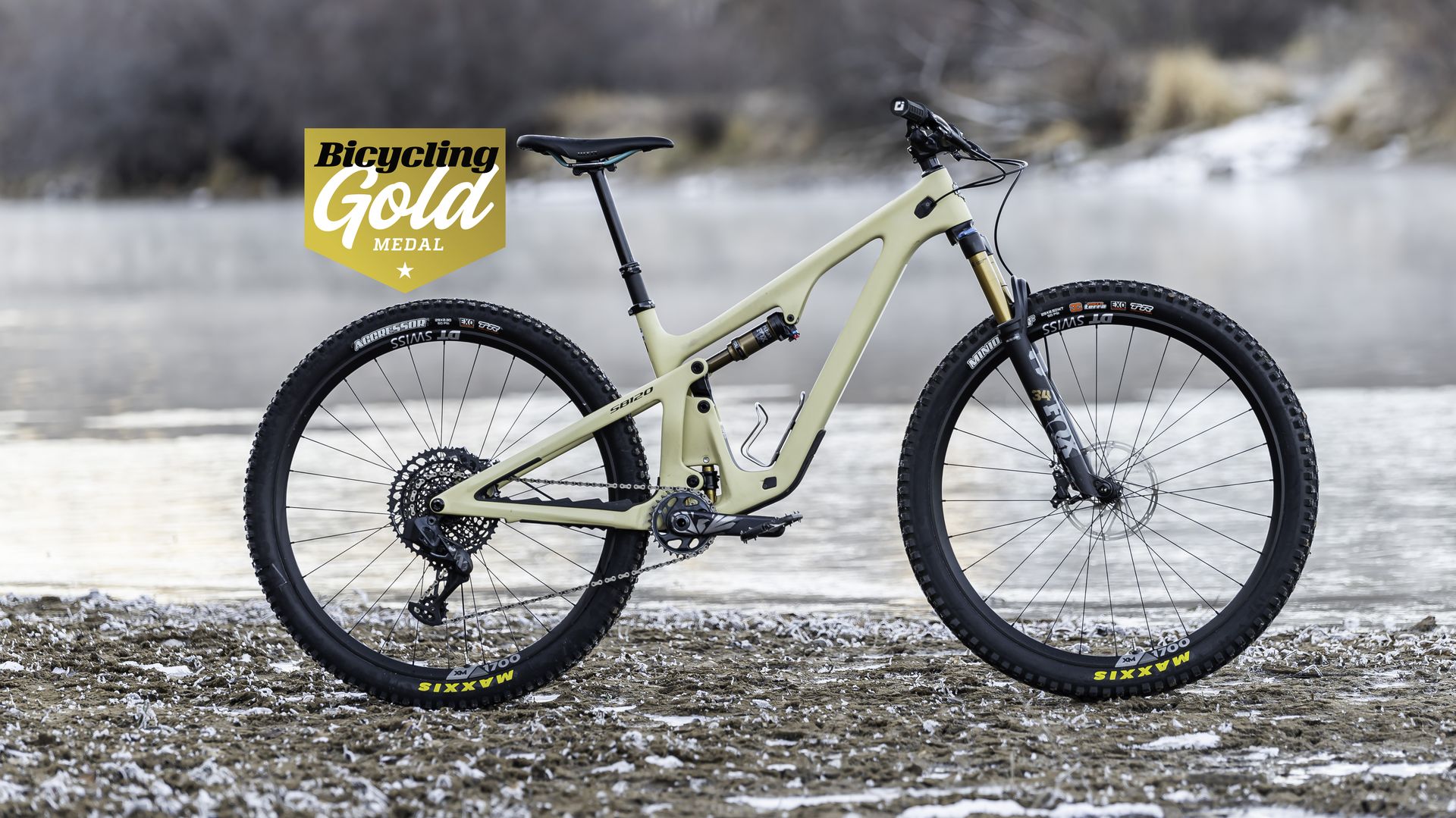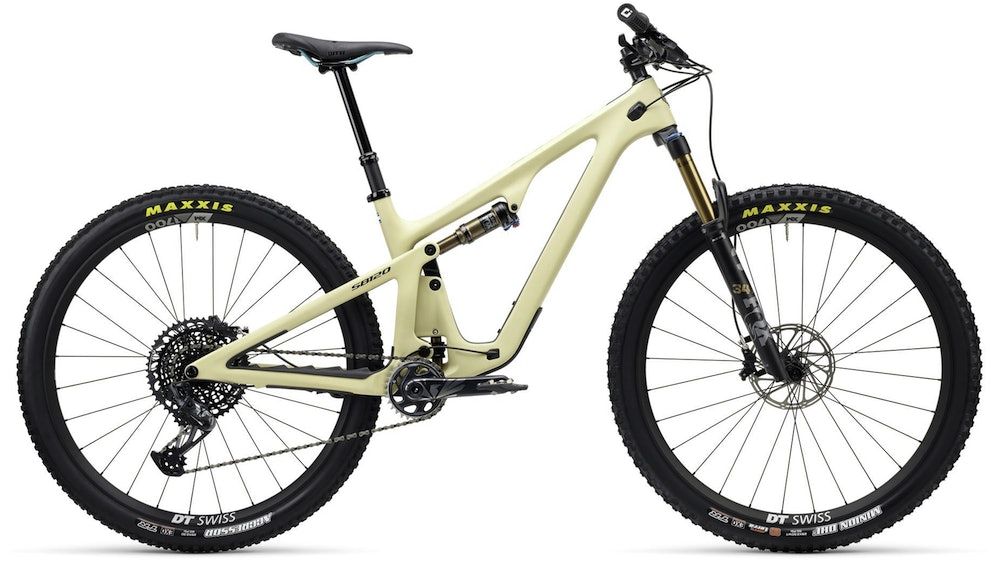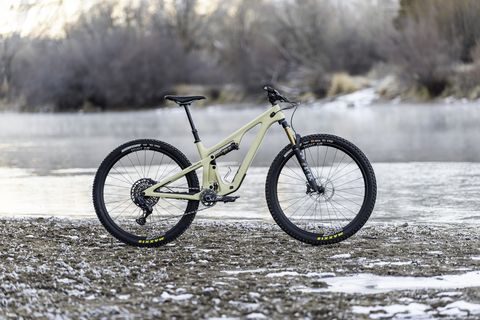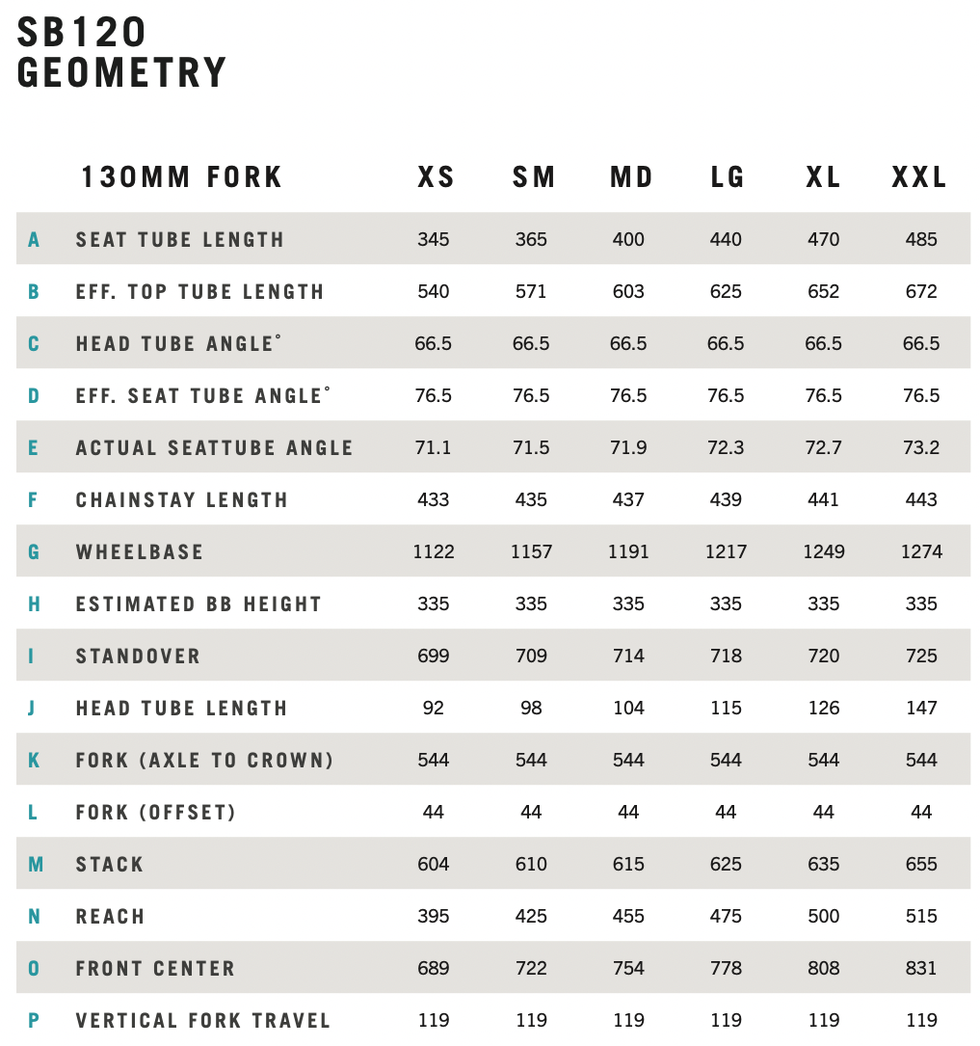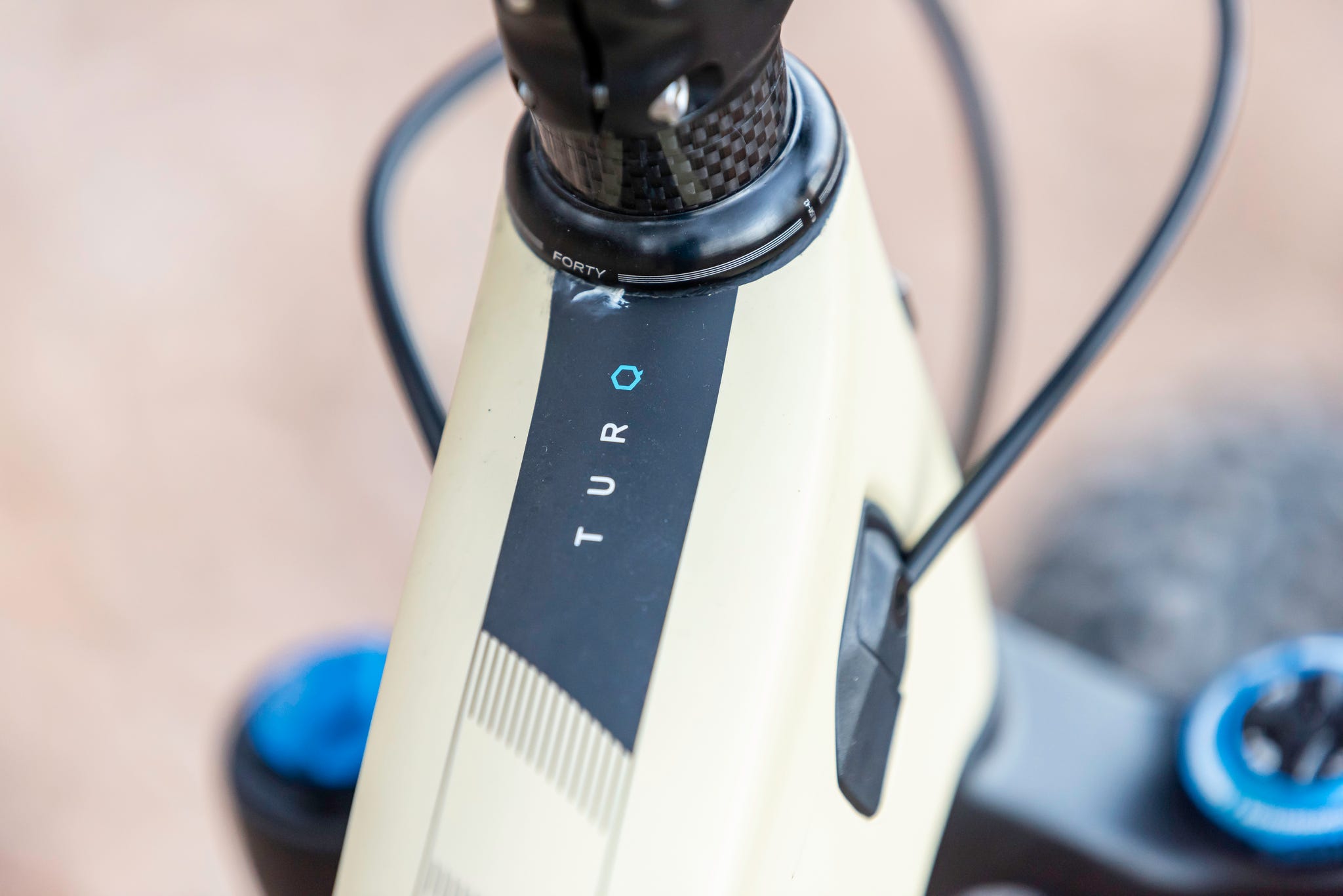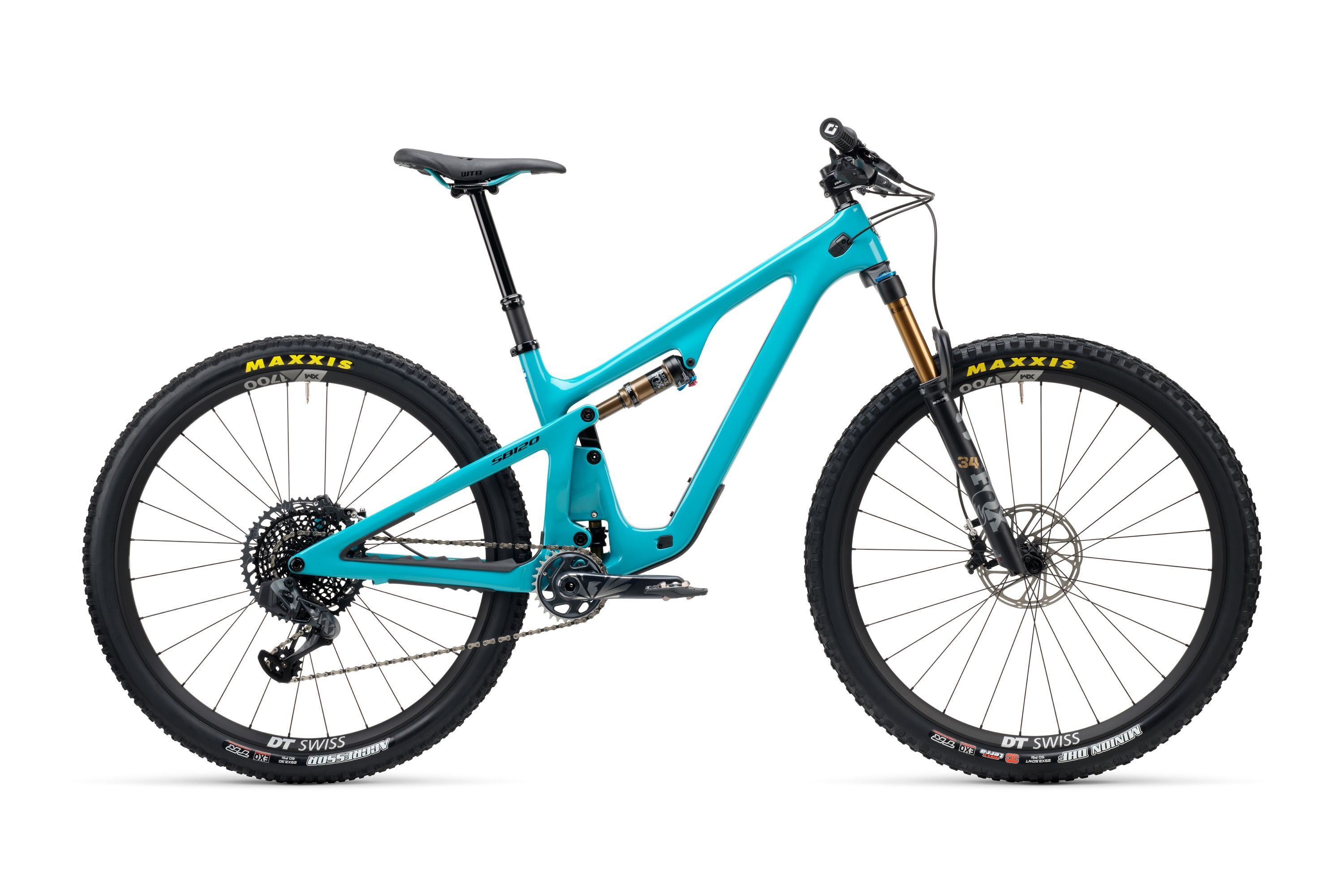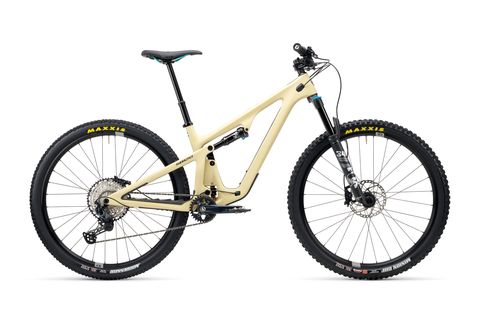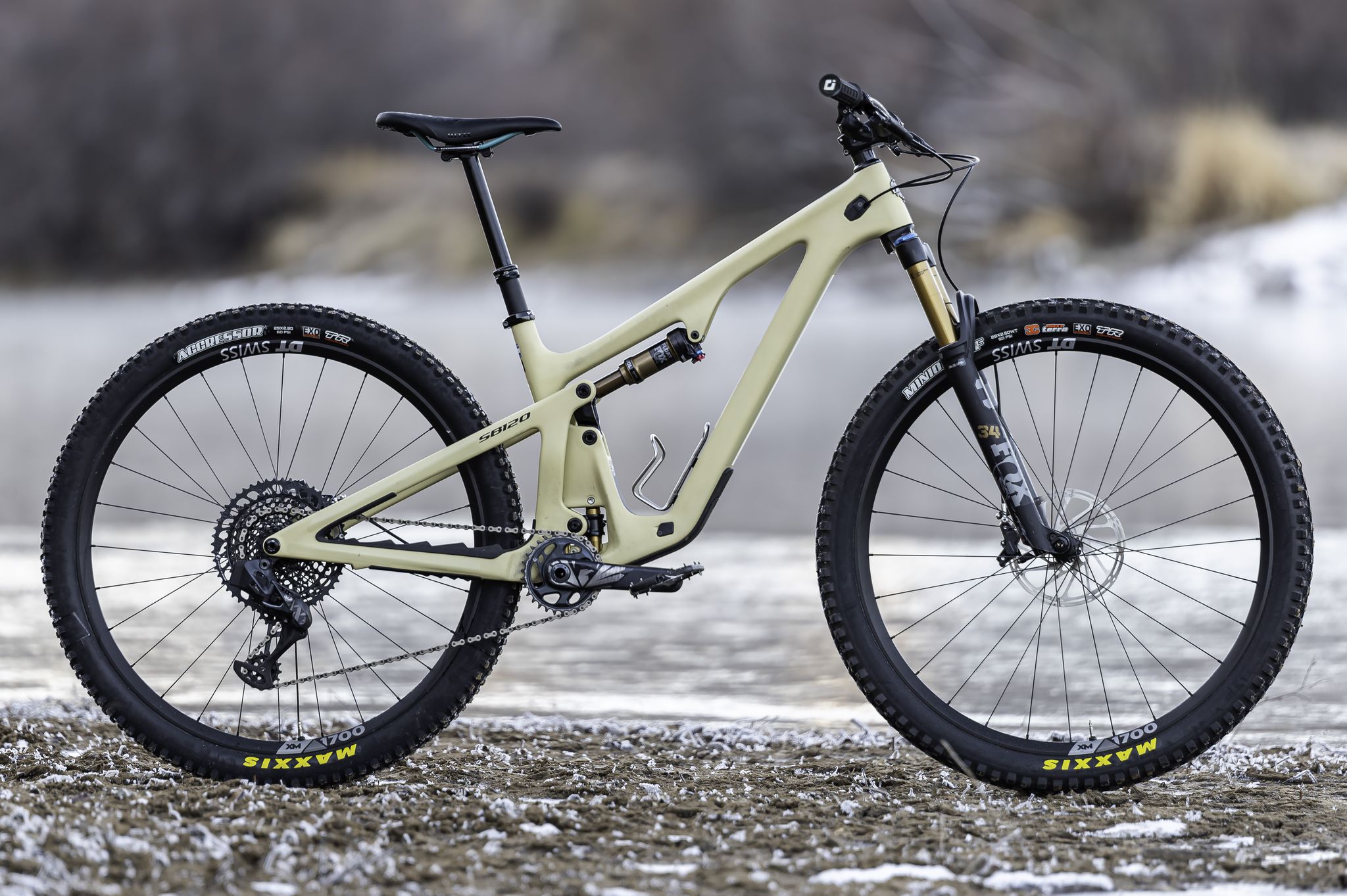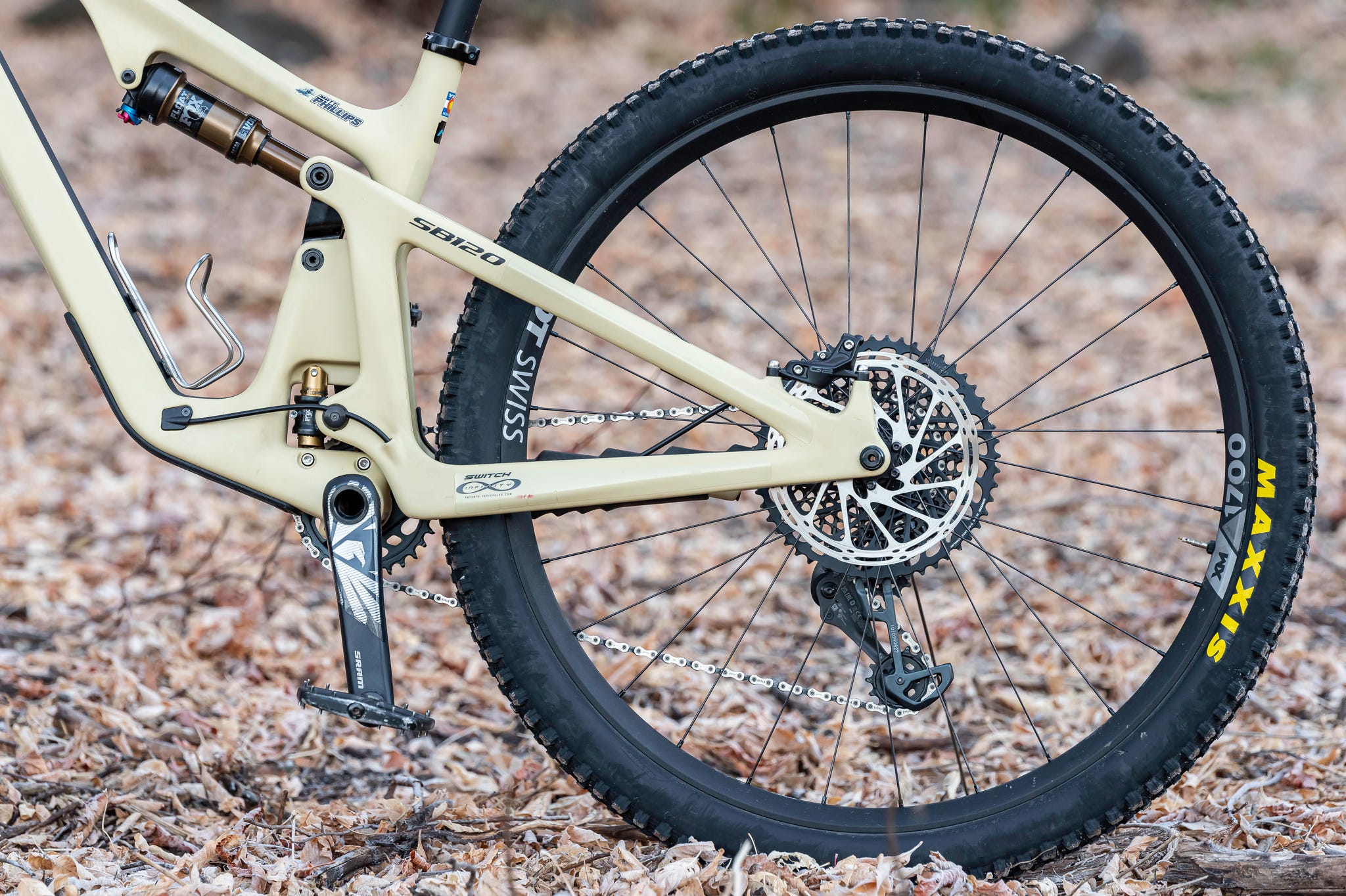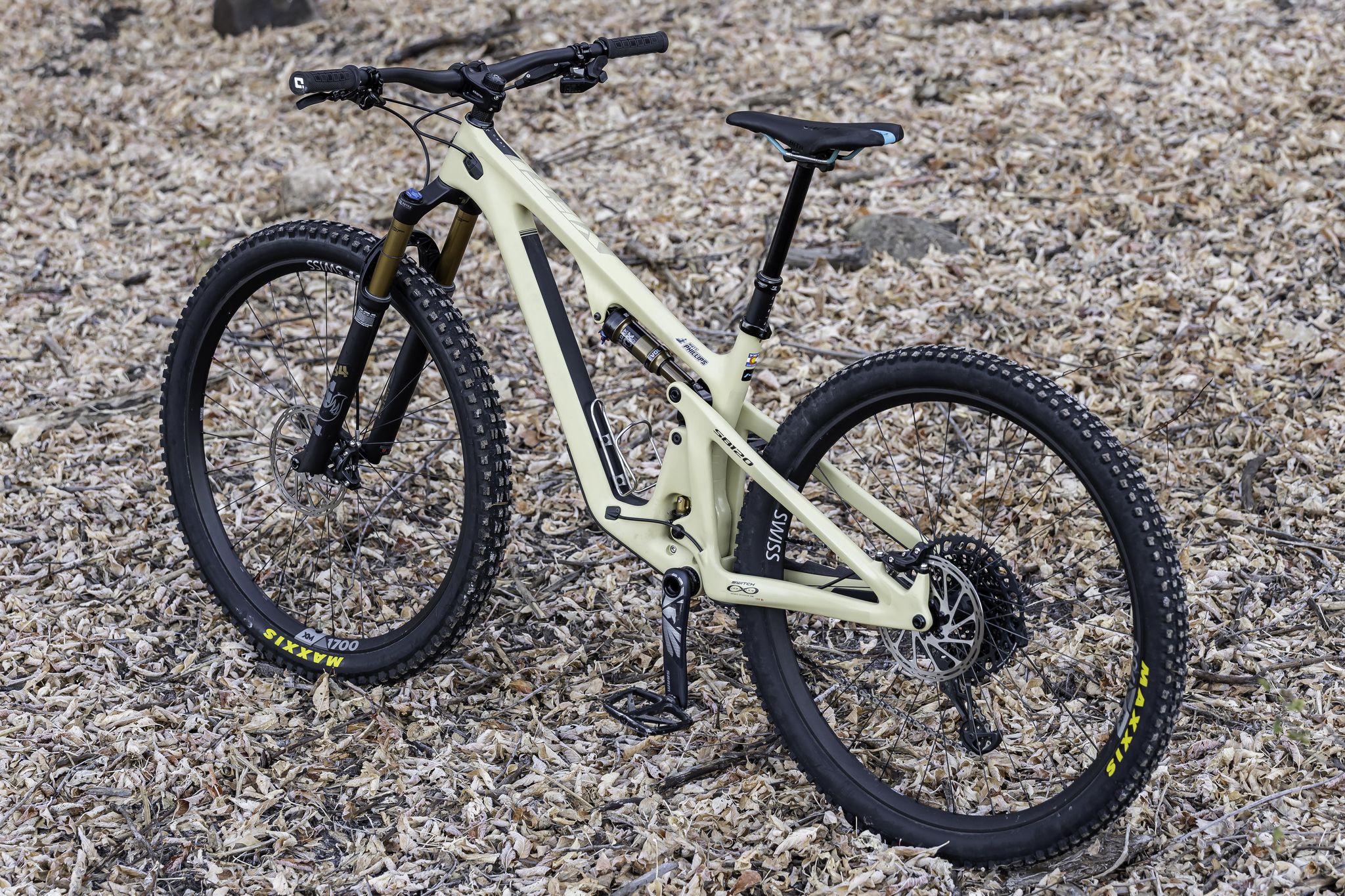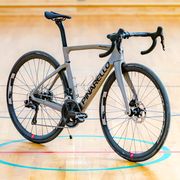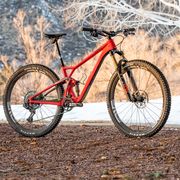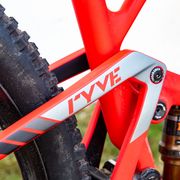The Takeaway: The Yeti the world has waited for is here, and it is great.
- All new 120mm frame platform
- Offered in size extra small through double extra large with size-specific seat tube angles and chain stay lengths.
- Five builds starting at $6,300.
Weight: 29.4 lb. (medium T3)
Price: $9,600 (T3 as tested)
View Gallery Learn More
Although the new SB120—a 29er trail bike with 120mm rear travel and a 130mm fork—replaces the SB115 as the Yeti's shortest-travel full suspension bike, the SB120 isn’t truly a replacement for the SB115. Instead, the SB120 continues the legacy of Yeti’s first 29er with its signature Switch Infinity link.
In 2014, Yeti debuted the Switch Infinity link, and it became the backbone of its full suspension bikes (save the 160E e-bike). But Switch Infinity (SI) debuted on a 27.5 bike, and Yeti didn't roll out its first 29er until a year later with the SB4.5c.
The 4.5c (previously, Yeti named models for inches of travel) had 114mm rear travel paired with a 140mm fork. It was a general-purpose and efficient all-purpose trail bike.
In contrast, the SB115 was an evolution—it used the same front and rear triangles—of the 100mm travel SB100 (a bike that was almost a cross-country race bike). Though the SB115 had a bit more travel than the SB100, it couldn’t shake the feel and handling of an XC bike. This handling was partly due to the geometry based on what was originally a shorter travel frame. The SB100/115 also used a unique interpretation of the Switch Infinity design—a smaller link in a transverse layout—while the SB120 uses the inline placement of the full-size link as the 4.5c and all other Switch Infinity bikes.
The SB100 (and 115) was a great bike, and somewhat forward-looking. It arrived on the scene well before the Transition Spur, Revel Ranger, Ibis Exie, and Allied BC40. But it couldn’t hide that Yeti had a gaping hole in its product line. Of all the brands you would expect to have a gravity-influenced fast and lively trail bike that is not afraid to get rowdy—something along the lines of an Evil Following, Santa Cruz Tallboy, Ibis Ripley (and others)—it would be Yeti.
But the SB115 wasn’t that bike: It was like baggy shorts pulled over a skinsuit. The SB120, in contrast, is a T-shirt and jorts, commando style. It’s the Yeti for which we have been waiting. And it’s great.
Yeti SB120 Frame Details
Although this is an all-new frame for Yeti, the SB120 shares a similar profile with the new SB160. The SB120 also incorporates many details the company introduced with that longer-travel frame. Those details include: Clamping hose and housing ports with full-length routing tubes, clamping hose/housing keepers at the bottom bracket, second-generation Switch Infinity link for Turq series frames, aluminum BSA threaded bottom bracket with ISCG05 tabs co-molded into the carbon frame, double density downtube protector, revised pivot bearing arrangement, standard sized Enduro Max pivot bearings, SRAM UDH derailleur hanger, frame-size specific chainstay lengths and seat tube angles, and a higher-clearance downtube.
All Yeti frames (including the Switch Infinity link) carry a lifetime warranty against manufacturing defects and a one-year on paint and finish. For damage and failures that fall outside of the warranty period, Yeti offers a discounted replacement policy.
The SB120 arrives in six sizes (extra small through double extra-large) and four colors (Turquoise, Dust, Raw Carbon, and Loch).
Yeti SB120 Geometry
Pasted here is Yeti’s geometry table so you can nerd out on the numbers for your size. Though I don’t think you’ll find anything too surprising in the angles or dimensions. Now that everybody’s geometry is “progressive”, no one's is.
That’s clear in the comparison table I made of the SB120’s geometry compared to that of its major competitors. And that competition is crazy fierce: Some of the most popular, best-known, and just plain best trail bikes live in this category. And as you can see, every brand has arrived at very similar numbers.
Honestly, I was surprised because geometry evolution has been such a story for the past few years that I expected to see more risk-takers or outliers. However, not shown in my chart is that the SB120 is one of a limited number of brands that use size-specific seat tube angles and chainstay lengths. The Santa Cruz Tallboy is the only other frame in this group offering both.
Yeti SB120 Builds and Prices
Yeti’s premium pricing should not surprise those who have been mountain biking for a while. This company only makes high-end products. SB120 complete builds start at $6,300 and top out at $12,100.
Like other platforms in its line, the SB120’s frame comes in two levels: Turq and Carbon. Although both frames have similar strength and stiffness levels, Turq SB120 frames have a claimed weight of 3,100 grams, while Carbon frames are approximately 225 grams heavier because they use lower-grade carbon. Other than the carbon recipe, both frames have almost identical details and features; the Switch Infinity link being a notable exception. While Carbon frames continue to use the V1 Switch Infinity link, Turq frames get the new V2 link which boasts better durability, stiffness, and lower friction than the V1.
Most SB120 builds follow Yeti’s familiar recipes: Fox suspension, Maxxis tires, and SRAM drivetrain and brakes. The only exception is the least expensive C1 build with Shimano SLX drivetrain and brakes. The highest-end SB120 is the T4 “pinner” build ($12,100) and is the lightest full suspension bike in Yeti’s line (claimed weight is 27.3 lb.). To cut weight, the T4 gets two-piston SRAM Level brakes, Fox’s Transfer SL dropper post (125mm travel on size XS and S, 150mm travel for M through XXL) Fox’s lighter FIT4 fork damper with lockout, a 760mm wide bar, Maxxis Rekon (front) and Rekon Race (rear) tires, the “CNC” version of Burgtec’s Enduro MK3 stem, and the DT-Swiss EXC1501 wheelset with carbon rims.
C-series builds offer an optional upgrade to Fox Factory suspension for $800, while the T1 and T3 builds have an optional upgrade to the DT-Swiss EXC1501 wheelset for $1,000. Yeti also sells the Turq frame only for $4,300. Full build details are on Yeti’s website, but here are the highlights.
- Yeti SB120 C1 - $6,300, Fox Performance 34 fork, Fox Performance Float DPS shock, Shimano SLX drivetrain and brakes, Crank Brothers Synthesis Enduro wheelset, OneUp Dropper
- Yeti SB120 C2 - $6,600, Fox Performance 34 fork, Fox Performance Float DPS shock, SRAM GX Eagle drivetrain, SRAM G2 R brakes, Crank Brothers Synthesis Enduro wheelset, OneUp Dropper
- Yeti SB120 T1 - $8,200, Fox Factory 34 Fork, Fox Factory Float DPS shock, SRAM Eagle mix drivetrain, SRAM G2 RSC brakes, DT Swiss XM1700 wheelset, Fox Transfer dropper
- Yeti SB120 T3 - $9,600, Fox Factory 34 Fork, Fox Factory Float DPS shock, SRAM Eagle AXS mix drivetrain, SRAM G2 RSC brakes, DT Swiss XM1700 wheelset, Fox Transfer dropper
- Yeti SB120 T4 - $12,100, Fox Factory 34 Fork, Fox Factory Float DPS shock, SRAM XX1 Eagle AXS drivetrain, SRAM Level Ultimate brakes, DT Swiss EXC1501 wheelset, Fox Transfer SL dropper.
Yeti SB120 Ride Impressions
Like all bike reviewers, I have my favorite bikes. And I’ve long loved Yeti bikes. The geometry, handling, and suspension characteristics work for me. This may be because we’re both based in Colorado.
Here’s a dirty bike industry secret: Most bikes make the most sense when ridden on the trails the brands use to test and develop those bikes.
But my favorite style of trail bike was the one kind Yeti didn’t make: The 120/130mm rowdy/playful but surprisingly capable trail bike exemplified by the Evil Following and Santa Cruz Tallboy. The SB120 fixes that and is an excellent addition to a category filled with amazing bikes.
Looking at the SB120 from a high-altitude view, I’m hard-pressed to say anything about it that I haven’t already said about its competitors. If you’re looking for a mountain bike that’s equal parts a proficient climber, capable on descents both fast and chunky, efficient when pedaling long and lower angle traverses, engaging and fun while doing it all, and doesn’t weigh a ton, that’s the SB120.
On climbs, the Switch Infinity suspension system performs like I’ve come to expect. The feel at the pedals is firm and the frame stays calm until disturbed by a bump. For all its efficiency, the SB120’s rear end is also very sensitive, provides great traction, and also tracks smoothly over ledges and roots. Overall the suspension feel is slightly firm and very supportive in a way that implies a stiff ride. But it is surprisingly forgiving and supple.
On seated climbs, the SB120’s steep, but not too steep, seat angle provides a comfortably forward pedaling position on steeper pitches. Thankfully, this excellent climbing position doesn’t result in a cramped feeling on flat trails and mellower pitches where the longer-ish top tube provides enough room to stretch out and open the lungs.
On the descents, the Switch Infinity is as impressive as it is on the climbs. Keeping in mind that this bike runs just 120mm of travel and has a lightweight inline Float DPS shock, the SB120 offers very good mid- to high-speed bump control. The rear end is progressive enough to keep the bike floating and skipping over repeated hard hits and control flatter landings.
While many shorter travel bikes have a rapid ramp at the end of the travel that almost feels like hitting a wall—and effectively limits usable travel—the SB120 offers good control and still lets the rider use the full 120mm travel. The medium bump feel is great also: There’s give and float with plenty of support. Square-edge hits are well handled too, with little hint that the SB120 is hanging up or slowing down.
The SB120 has well-balanced handling for most trail conditions. The handling is where you want it for a bike that the rider expects to climb well, descend with aplomb, and cruise flat trails, twisties, and traverses with a high level of competence. The SB120 is a bike that, even for this category, just slightly rewards good line choices and precision riding more than it does point and smash.
Part of that is due to the ever so slightly higher bottom bracket, steeper head angle, and shorter wheelbase than some bikes in this category, but there’s also that well-tuned rear suspension and balanced frame stiffness. It’s not just that the SB120 rewards good line choices and precision riding, it’s that it allows them. It’s been quite a while since I’ve ridden a bike that’s so balanced and intuitive feeling on the trail.
If there’s a knock against the SB120 it is the weight. The size medium SB120 (with a $9,600 T3 build I tested) weighs nearly 30 pounds. That’s approaching the weight of some bikes in the next travel category up (140mm-ish). The SB120 is not an outlier in the category as some of its competitors also weigh close to 30 pounds. It’s the result of better suspension, more features, tougher wheels, better tires, and more durable frames.
Personally, I love the quicker and more communicative feel of what some might consider an overbuild short travel frame and usually prefer it to a bigger travel bike even if the bigger bike is nearly the same weight. But I also understand why some riders look at the weights of some of the most popular members of this 120mm category and choose to step up to a bigger bike that weighs only slightly more. Options are great, and there are many of them.
I do think it’s impossible to make a bad choice if you’re trying to decide between the SB120 and its primary competitors. Based on my experience, the SB120 has mellower steering than the Evil Following and Ibis Ripley but has better front wheel traction at medium and low speeds than the Tallboy. It pedals more efficiently than the Tallboy and Following, while the suspension is more sensitive than on the Pivot.
The rear suspension doesn’t feel as plush and deep as the Following or Tallboy’s, while it feels slightly, more smoothly linear than the Pivot’s. It’s more playful than most of its competitors, though not as hyperkinetic as the Evil. It climbs better than the Following and Tallboy (though for different reasons) and descends better than the Ripley and Trail 429. But I really, really, have to split hairs to say all that. Every one of those bikes is a god dammed marvel.
It’s almost like Yeti was able to take a Following, Tallboy, Ripley, and Trail 429, mash them up and sculpt one bike that almost exactly rides like a mashup of four great 120/130mm bikes. If you’ve wanted a bike that pedals like a Trail 429, pops like a Following, and descends like a Tallboy, the SB120 is that bike.
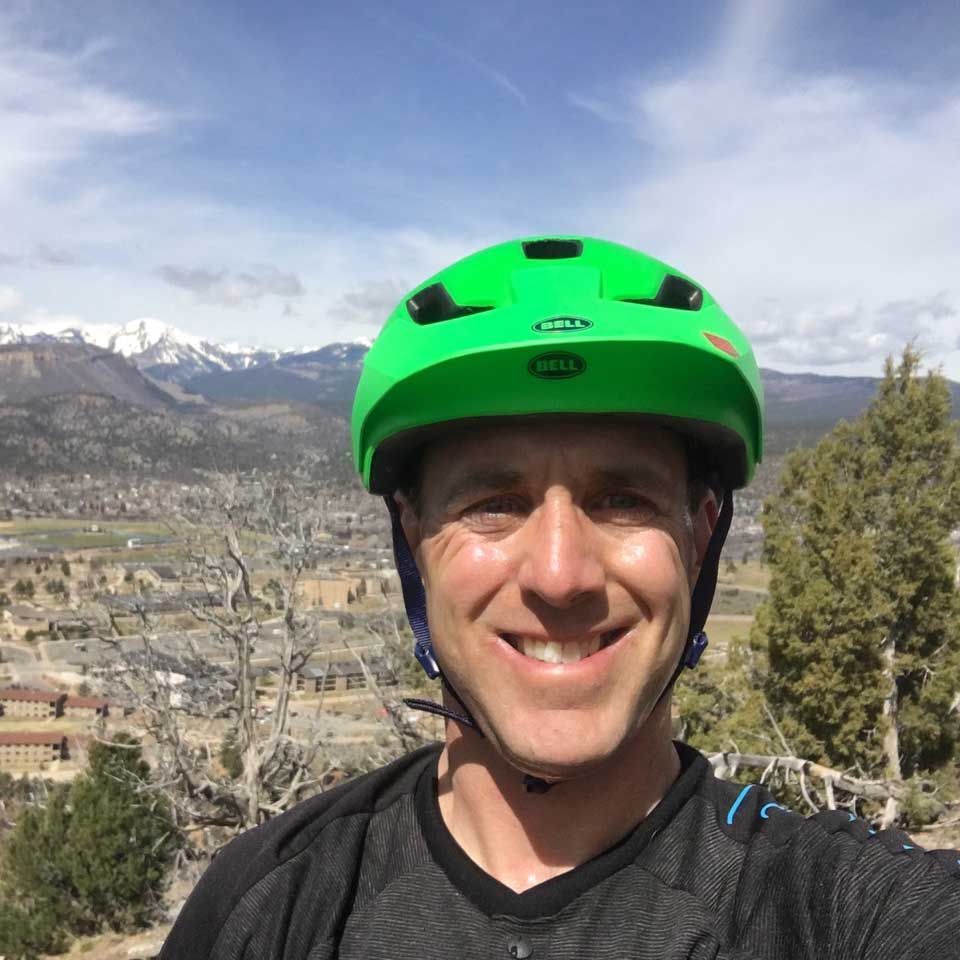
A gear editor for his entire career, Matt’s journey to becoming a leading cycling tech journalist started in 1995, and he’s been at it ever since; likely riding more cycling equipment than anyone on the planet along the way. Previous to his time with Bicycling, Matt worked in bike shops as a service manager, mechanic, and sales person. Based in Durango, Colorado, he enjoys riding and testing any and all kinds of bikes, so you’re just as likely to see him on a road bike dressed in Lycra at a Tuesday night worlds ride as you are to find him dressed in a full face helmet and pads riding a bike park on an enduro bike. He doesn’t race often, but he’s game for anything; having entered road races, criteriums, trials competitions, dual slalom, downhill races, enduros, stage races, short track, time trials, and gran fondos. Next up on his to-do list: a multi day bikepacking trip, and an e-bike race.
